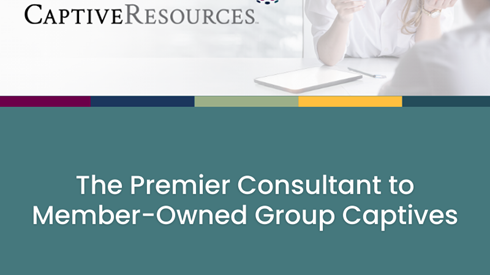How Companies Can Maximize the Group Captive Experience

Captive Resources | October 09, 2024

Editor's Note: This article, provided by Captive Resources, LLC, explores how organizations can optimize their group captive insurance experience. It focuses on three key areas for success: actively controlling risk, engaging with fellow members, and participating in the claims process to improve overall insurance program results.
Group captive insurance offers member-companies increased control over their insurance programs, resources to make their workplaces safer, and the opportunity to lower their insurance costs. But merely joining a group captive doesn't guarantee all the potential benefits. For companies to reap the full reward of group captive ownership,1 it's important that they no longer see themselves as passive buyers of an insurance policy and begin to function as engaged owners of an insurance company.
In this article, we'll cover three ways for member-companies to get the most out of their group captive experience.
No. 1: Taking an Active Approach to Controlling Risk
Typically, companies that join group captives already embody accountability-based safety cultures and have better-than-average loss histories for their respective industries. Regardless of how effective their risk control efforts have been, there's always room for improvement. And, as owners and insureds of the captive, when members effectively control risk and minimize claims costs, they increase the potential for lower premiums and dividends.
For an example of how this works, here are two of the many resources that group captive members can take advantage of to improve their risk control efforts.
Risk Control Assessment
A Risk Control Assessment (RCA) is a best practice tool consisting of an in-depth review of a member's risk control policies and procedures compared to industry best practices. The RCA identifies the member's areas of strength, lists opportunities to improve, and informs the development of mutually agreed-upon action plans with a safety consultant. An independent study2 found that member-companies that improved RCA scores saw material reductions in workers compensation claims.
Risk Control Workshops and Webinars
Members have frequent opportunities to attend risk control workshops and webinars focused on safety best practices, compliance, and safety leadership development. Significantly, member-companies attending more than five risk control workshops improved their RCA scores by an average of 0.73 points, according to the same independent study cited above.
No. 2: Interacting with Fellow Members
One of the most significant ways member-companies learn about new, innovative, and practical risk strategies is through networking with their fellow members. The group captives we work with have multiple meetings throughout the year (board meetings, risk workshops, etc.) that give member-companies ample opportunity to share what has—or has not—worked for them.
Serving on their captive's committees or board of directors offers member-companies another opportunity to improve their insurance program and take on a more active role. Based on their interests and expertise, representatives from member-companies can serve on committees such as finance and investments, underwriting, or risk control, and make recommendations to the board.
No. 3: Participating in the Claims Process
While members do not actually manage claims, they have significantly more involvement in the claims process than they would with most commercial insurers. The member-owned group captives we support provide regularly scheduled, transparent claims reviews involving the third-party administrator, broker, and legal counsel. During these reviews, adjusters present reports with information like the history and status of members' large claims, and handling and closure strategies are discussed.
Members receive insights into their loss exposures and the funds available to cover the claims. Access to these critical data points during claims processing allows members to anticipate claim payouts before final claim adjudication. Members are responsible for reporting all claims promptly and proactively providing information for adjusters. But they can expect their adherence to these responsibilities to often pay off in the form of lower claim costs.
1. The details outlined in this article are specific to member-owned group captives supported by Captive Resources and may not apply to all captive programs.
2. The independent study focused on members in several group captives supported by Captive Resources.
Captive Resources | October 09, 2024

